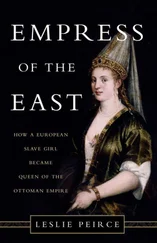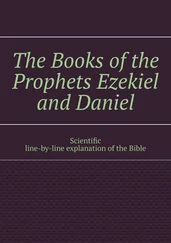Array Aśvaghosha - Sacred Books of the East
Здесь есть возможность читать онлайн «Array Aśvaghosha - Sacred Books of the East» — ознакомительный отрывок электронной книги совершенно бесплатно, а после прочтения отрывка купить полную версию. В некоторых случаях можно слушать аудио, скачать через торрент в формате fb2 и присутствует краткое содержание. Жанр: Религиозная литература, Религиозная литература, foreign_religion, на английском языке. Описание произведения, (предисловие) а так же отзывы посетителей доступны на портале библиотеки ЛибКат.
- Название:Sacred Books of the East
- Автор:
- Жанр:
- Год:неизвестен
- ISBN:нет данных
- Рейтинг книги:3 / 5. Голосов: 1
-
Избранное:Добавить в избранное
- Отзывы:
-
Ваша оценка:
- 60
- 1
- 2
- 3
- 4
- 5
Sacred Books of the East: краткое содержание, описание и аннотация
Предлагаем к чтению аннотацию, описание, краткое содержание или предисловие (зависит от того, что написал сам автор книги «Sacred Books of the East»). Если вы не нашли необходимую информацию о книге — напишите в комментариях, мы постараемся отыскать её.
Sacred Books of the East — читать онлайн ознакомительный отрывок
Ниже представлен текст книги, разбитый по страницам. Система сохранения места последней прочитанной страницы, позволяет с удобством читать онлайн бесплатно книгу «Sacred Books of the East», без необходимости каждый раз заново искать на чём Вы остановились. Поставьте закладку, и сможете в любой момент перейти на страницу, на которой закончили чтение.
Интервал:
Закладка:
The essay published in 1831 by Peter von Bohlen on the origin of the Zend language threw the matter forty years back. According to him, Zend is a Prácrit dialect, as it had been pronounced by Jones, Leyden, and Erskine. His mistake consisted in taking Anquetil's transcriptions of the words, which are often so incorrect as to make them look like corrupted forms when compared with Sanscrit. And, what was worse, he took the proper names in their modern Parsi forms, which often led him to comparisons that would have appalled Ménage. Thus Ahriman became a Sanscrit word ariman, which would have meant "the fiend"; yet Bohlen might have seen in Anquetil's work itself that Ahriman is nothing but the modern form of Angra Mainyu, words which hardly remind one of the Sanscrit ariman. Again, the angel Vohu-manô, or "good thought," was reduced, by means of the Parsi form Bahman, to the Sanscrit bâhumân, "a long-armed god."
At length came Burnouf. From the time when Anquetil had published his translation, that is to say during seventy years, no real progress had been made in knowledge of the Avesta texts. The notion that Zend and Sanscrit are two kindred languages was the only new idea that had been acquired, but no practical advantage for the interpretation of the texts had resulted from it. Anquetil's translation was still the only guide, and as the doubts about the authenticity of the texts grew fainter, the authority of the translation became greater, the trust reposed in the "Avesta" being reflected on to the work of its interpreter. The Parsis had been the teachers of Anquetil; and who could ever understand the holy writ of the Parsis better than the Parsis themselves? There was no one who even tried to read the texts by the light of Anquetil's translation, to obtain a direct understanding of them.
About 1825 Eugène Burnouf was engaged in a course of researches on the geographical extent of the Aryan languages in India. After he had defined the limits which divide the races speaking Aryan languages from the native non-brahmanical tribes in the south, he wanted to know if a similar boundary had ever existed in the northwest; and if it is outside of India that the origin of the Indian languages and civilization is to be sought for. He was thus led to study the languages of Persia, and, first of all, the oldest of them, the Zend. But as he tried to read the texts by help of Anquetil's translation, he was surprised to find that this was not the clue he had expected. He saw that two causes had misled Anquetil: on the one hand, his teachers, the Parsi dasturs, either knew little themselves or taught him imperfectly, not only the Zend, but even the Pahlavi intended to explain the meaning of the Zend; so that the tradition on which his work rested, being incorrect in itself, corrupted it from the very beginning; on the other hand, as Sanscrit was unknown to him and comparative grammar did not as yet exist, he could not supply the defects of tradition by their aid. Burnouf, laying aside tradition as found in Anquetil's translation, consulted it as found in a much older and purer form, in a Sanscrit translation of the Yasna made in the fifteenth century by the Parsi Neriosengh in accordance with the old Pahlavi version. The information given by Neriosengh he tested, and either confirmed or corrected, by a comparison of parallel passages and by the help of comparative grammar, which had just been founded by Bopp, and applied by him successfully to the explanation of Zend forms. Thus he succeeded in tracing the general outlines of the Zend lexicon and in fixing its grammatical forms, and founded the only correct method of interpreting the "Avesta." He also gave the first notions of a comparative mythology of the "Avesta" and the "Veda," by showing the identity of the "Vedic Yama" with the "Avesta Yima," and of Traitâna with Thraêtaona and Ferìdûn. Thus he made his "Commentaire sur le Yasna" a marvellous and unparalleled model of critical insight and steady good sense, equally opposed to the narrowness of mind which clings to matters of fact without rising to their cause and connecting them with the series of associated phenomena, and to the wild and uncontrolled spirit of comparison, which, by comparing everything, confounds everything. Never sacrificing either tradition to comparison or comparison to tradition he knew how to pass from the one to the other, and was so enabled both to discover facts and to explain them.
At the same time the ancient Persian inscriptions at Persepolis and Behistun were deciphered by Burnouf in Paris, by Lassen in Bonn, and by Sir Henry Rawlinson in Persia. Thus was revealed the existence, at the time of the first Achaemenian kings, of a language closely connected with that of the "Avesta," and the last doubts as to the authenticity of the Zend books were at length removed. It would have required more than an ordinary amount of scepticism to look still upon the Zend as an artificial language, of foreign importation, without root in the land where it was written, and in the conscience of the people for whom it was written, at the moment when a twin language, bearing a striking likeness to it in nearly every feature, was suddenly making itself heard from the mouth of Darius, and speaking from the very tomb of the first Achaemenian king. That unexpected voice silenced all controversies, and the last echoes of the loud discussion which had been opened in 1771 died away unheeded.
SELECTIONS FROM THE ZEND-AVESTA
THE CREATION 10 10 This chapter is an enumeration of sixteen perfect lands created by Ahura Mazda, and of as many plagues created in opposition by Angra Mainyu. Many attempts have been made, not only to identify these sixteen lands, but also to draw historical conclusions from their order of succession, as representing the actual order of the migrations and settlements of the old Iranian tribes. But there is nothing in the text to support such wide inferences. We have here nothing more than a geographical description of Iran, seen from the religious point of view.
Ahura Mazda spake unto Spitama Zarathustra, saying:—
"I have made every land dear to its people, even though it had no charms whatever in it: had I not made every land dear to its people, even though it had no charms whatever in it, then the whole living world would have invaded the Airyana Vaêgô. The first of the good lands and countries which I, Ahura Mazda, created, was the Airyana Vaêgô, by the Vanguhi Dâitya. Thereupon came Angra Mainyu, who is all death, and he counter-created the serpent in the river and Winter, a work of the Devas. There are ten winter months there, two summer months; and those are cold for the waters, cold for the earth, cold for the trees. Winters fall there, the worst of all plagues. The second of the good lands and countries which I, Ahura Mazda, created, was the plain which the Sughdhas inhabit. Thereupon came Angra Mainyu, who is all death, and he counter-created the locust, which brings death unto cattle and plants. The third of the good lands and countries which I, Ahura Mazda, created, was the strong, holy Môuru. Thereupon came Angra Mainyu, who is all death, and he counter-created plunder and sin. The fourth of the good lands and countries which I, Ahura Mazda, created, was the beautiful Bâkhdhi with high-lifted banners. Thereupon came Angra Mainyu, who is all death, and he counter-created the ants and the ant-hills. The fifth of the good lands and countries which I, Ahura Mazda, created, was Nisâya, that lies between Môuru and Bâkhdhi. Thereupon came Angra Mainyu, who is all death, and he counter-created the sin of unbelief. The sixth of the good lands and countries which I, Ahura Mazda, created, was the house-deserting Harôyu. Thereupon came Angra Mainyu, who is all death, and he counter-created tears and wailing. The seventh of the good lands and countries which I, Ahura Mazda, created, was Vaêkereta, of the evil shadows. Thereupon came Angra Mainyu, who is all death, and he counter-created the Pairika Knâthaiti, who clave unto Keresâspa. The eighth of the good lands and countries which I, Ahura Mazda, created, was Urva of the rich pastures. Thereupon came Angra Mainyu, who is all death, and he counter-created the sin of pride. The ninth of the good lands and countries which I, Ahura Mazda, created, was Khnenta which the Vehrkânas inhabit. Thereupon came Angra Mainyu, who is all death, and he counter-created a sin for which there is no atonement, the unnatural sin. The tenth of the good lands and countries which I, Ahura Mazda, created, was the beautiful Harahvaiti. Thereupon came Angra Mainyu, who is all death, and he counter-created a sin for which there is no atonement, the burying of the dead. The eleventh of the good lands and countries which I, Ahura Mazda, created, was the bright, glorious Haêtumant. Thereupon came Angra Mainyu, who is all death, and he counter-created the evil work of witchcraft. And this is the sign by which it is known, this is that by which it is seen at once: wheresoever they may go and raise a cry of sorcery, there the worst works of witchcraft go forth. From there they come to kill and strike at heart, and they bring locusts as many as they want. The twelfth of the good lands and countries which I, Ahura Mazda, created, was Ragha of the three races. Thereupon came Angra Mainyu, who is all death, and he counter-created the sin of utter unbelief. The thirteenth of the good lands and countries which I, Ahura Mazda, created, was the strong, holy Kakhra. Thereupon came Angra Mainyu, who is all death, and he counter-created a sin for which there is no atonement, the cooking of corpses. The fourteenth of the good lands and countries which I, Ahura Mazda, created, was the four-cornered Varena, for which was born Thraêtaona, who smote Azi Dahâka. Thereupon came Angra Mainyu, who is all death, and he counter-created abnormal issues in women and barbarian oppression. The fifteenth of the good lands and countries which I, Ahura Mazda, created, was the Seven Rivers. Thereupon came Angra Mainyu, who is all death, and he counter-created abnormal issues in women and excessive heat. The sixteenth of the good lands and countries which I, Ahura Mazda, created, was the land by the sources of the Rangha, where people live who have no chiefs. Thereupon came Angra Mainyu, who is all death, and he counter-created Winter, a work of the Devas. There are still other lands and countries, beautiful and deep, longing and asking for the good, and bright."
Читать дальшеИнтервал:
Закладка:
Похожие книги на «Sacred Books of the East»
Представляем Вашему вниманию похожие книги на «Sacred Books of the East» списком для выбора. Мы отобрали схожую по названию и смыслу литературу в надежде предоставить читателям больше вариантов отыскать новые, интересные, ещё непрочитанные произведения.
Обсуждение, отзывы о книге «Sacred Books of the East» и просто собственные мнения читателей. Оставьте ваши комментарии, напишите, что Вы думаете о произведении, его смысле или главных героях. Укажите что конкретно понравилось, а что нет, и почему Вы так считаете.











